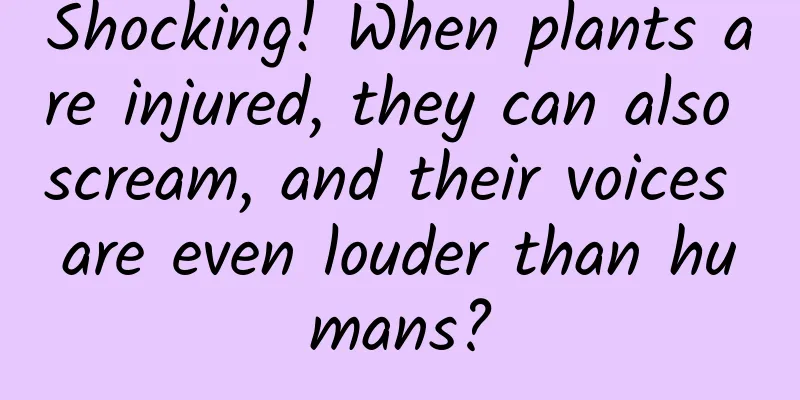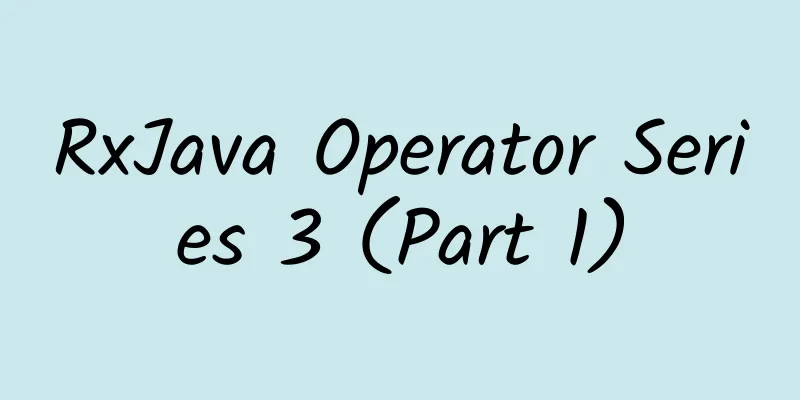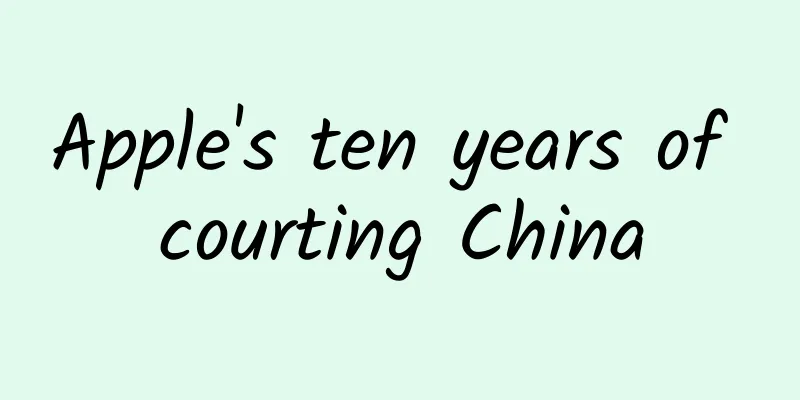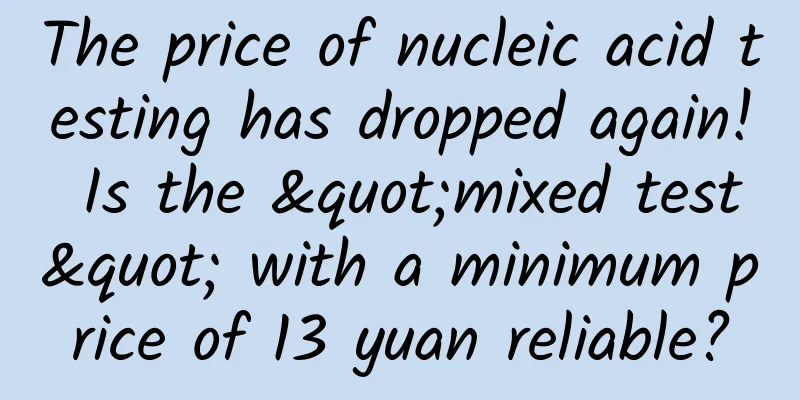Shocking! When plants are injured, they can also scream, and their voices are even louder than humans?

|
When we were sorting documents, we got a cut on our hands from A4 paper; when we fell, our knees got a cut from the ground... It doesn't matter, as long as we disinfect, the wound will scab over and heal in a few days. Many animals will lick their wounds and bask in the sun after minor injuries, and they will be full of energy again in a few days. Animals can do this, but have you ever thought about what to do if plants are injured? Plants are inherently vulnerable to damage After all, most plants are rooted in the soil and grow fixedly. They cannot actively escape danger like animals. They can only passively respond to external threats through their growth position and morphological characteristics. Compared with highly flexible animals, plants can only "respond passively." Copyright images in the gallery. Reprinting and using them may lead to copyright disputes. For example, facing increasingly severe extreme weather conditions such as storms and rainstorms, various new diseases, and mechanical damage from biting herbivorous insects and animals can all cause serious damage to plants. When plants are injured, the exposed wounds become a portal for external pathogens and pests to invade, while causing the loss of water and nutrients, leading to the weakening of the plant, and affecting its growth and development, and even death in severe cases. Therefore, it is never a good idea to leave the wounds of plants alone. However, most plants cannot move, and they cannot do even the simplest treatment for wounds like humans and animals. Therefore, under the pressure of the environment, plants have evolved a unique and efficient wound repair mechanism. Although they cannot move, they can quickly repair wounds and prevent external threats from invading by relying on their own structure and biochemical reactions . So how do plants "know" that they are injured, and how do they heal? Let's talk about it next. Do plants feel pain when they are injured? When we are injured, our first reaction is "pain", and this is also true for many animals. However, plants, as multicellular eukaryotic organisms with cellulose cell walls, are very different from animals in their basic structure. Plants do not have a specialized nervous system like animals, and they do not show obvious stress responses when they are injured, such as screaming, dodging, and attacking. Therefore, many people may think that since plants do not have a nervous system, they must be unaware of injuries. In fact, this statement is not comprehensive. Because although plants do not feel "pain" like humans or many animals, they can still "know" where they are injured and take corresponding measures. It turns out that plants can sense external stimuli through a series of complex biochemical mechanisms. When they are hurt, plants will take clever countermeasures, such as responding quickly at the molecular level through electrical signals, chemical signals and hormone regulation, and activating their own defense and repair mechanisms. For example, when many plant leaves are injured by being picked by humans or eaten by animals, the damaged parts will release glutamate, which will cause the injured part of the plant to produce calcium signals and transmit them to the whole plant in a short time. The plant will then activate its defense mechanism to remind other parts of the plant that danger is approaching and to take defensive measures. Their defense methods usually include the release of defense hormones, such as some smelly hormones that attract parasitic wasps. These parasitic wasps will eat insects that attack plants, or trigger the release of unpleasant chemicals to make insects lose their appetite for them, in order to protect themselves. Arabidopsis thaliana's response to injury. The white arrows indicate the injured area, and the flashes indicate the transmission of calcium signals. Image from references In addition, when plants are hurt, they can also make sounds that humans cannot hear . Scientists have done a lot of experiments and found that after squeezing tomatoes and cutting tobacco stems, these plants can actually emit ultrasonic waves. According to statistics, when tomatoes are squeezed, they emit 25 types of ultrasonic waves within 1 hour, and when tobacco stems are cut, they emit 15 types of ultrasonic waves. Plants that are not cut or squeezed only occasionally make sounds, with an average of less than one sound per hour. It can be seen that plants still respond to damage, but it is difficult for us to perceive it normally. So, plants don’t have a nervous system, and they probably can’t feel “pain” like us, but they also have complex and unique perception and response mechanisms , and they will perceive and respond to their own injuries in ways that we have not yet fully understood. How do plant wounds heal? So the question is, even if plants can "feel" where they are injured, they cannot take actions like licking, bandaging themselves, and using the surrounding environment to repair the wound quickly like animals. So how do plants "heal"? In fact, although plants do not have specialized callus tissue for healing like animals, they have evolved a set of efficient repair mechanisms to quickly respond to injuries through cell regeneration, wound closure, and secretion of substances . It is these unique biological mechanisms that enable plants to heal quickly after being injured, thus continuing to survive under environmental pressure and external threats. Once injured, the wound of the plant will immediately secrete resin, latex or other chemical secretions. These secretions can not only seal the wound and prevent water loss, but also act as a barrier to prevent further invasion of pathogens. For example, when a pine tree is injured, the wound will secrete rosin to protect the wound. At the same time, the wound of the injured plant will quickly activate the jasmonic acid signal, which can induce the slow accumulation of lignin at the wound, strengthen the cell wall of the injured tissue, and seal the wound to form a "scab". During the "scab formation" process of the wound, due to the long time, the rapidly activated jasmonic acid signal cannot respond continuously. At this time, the plant will also produce abscisic acid signal to replace the jasmonic acid signal and activate a key protein called RAP2.6, thereby completing the continuous synthesis and accumulation of lignin at the wound, ensuring the continuous repair of the plant wound until the "scab" is healed and growth continues. It is precisely relying on these unique physiological mechanisms that plants can quickly repair wounds from various injuries encountered during their growth and reduce physiological and pest damage, thereby ensuring their normal growth and reproduction. This efficient self-healing ability cannot but make us admire the wonderful way in which organisms adapt to the environment. What is the significance of plant “healing” to humans? Seeing this, we already know that plants can not only sense injuries, but also use their own powerful healing ability to maintain their own lives. At this point, some people may ask: What is the significance of scientists studying the healing of plant wounds for humans? In fact, after being injured, plants can not only repair themselves, but some can also replace themselves (regenerate various organs). This is plant regeneration. People discovered the phenomenon of plant regeneration very early and applied it to actual production, such as tissue culture, cuttings and grafting, to quickly reproduce and continue the excellent traits of the parents . Now scientists are studying the molecular mechanism of plant injury, which will help humans further understand plant regeneration, thereby further improving regeneration methods and improving agricultural technology, thereby accelerating plant reproduction and improving plant quality. Copyrighted stock images, reprinting and using may cause copyright disputes In addition, gardening pruning is an important part of garden seedling maintenance. Properly pruned seedlings will become healthier and more beautiful. However, the pruning process will inevitably cause damage to the plants. If gardeners can scientifically and rationally use the wound healing mechanism of plants during gardening pruning, and choose the best pruning time, tools and methods, they can effectively reduce the risk of disease infection caused by pruning, help plants quickly resume growth, and improve the beauty of ornamental plants and the yield of cash crops. Therefore, the healing of plant wounds is not only beneficial to the plants themselves, but also benefits humans. Studying the healing mechanism of plants can not only help us better understand the survival strategies of plants, but also bring wide application value to many fields such as agriculture, benefiting mankind. References [1]Masatsugu Toyota et al. ,Glutamate triggers long-distance, calcium-based plant defense signaling.Science361,1112-1115(2018).DOI:10.1126/science.aat7744 Planning and production Author: Li Ting, Institute of Agricultural Genomics, Chinese Academy of Agricultural Sciences Review丨Gu Lei, Ph.D. in Botany, Chinese Academy of Sciences, Associate Professor, Capital Normal University Planning丨Ding Zong Editor: Ding Zong Proofread by Xu Lai and Lin Lin The cover image and the images in this article are from the copyright library Reprinting may lead to copyright disputes |
Recommend
Taking advantage of the merger between Didi and Uber in China, Durex’s “old driver” copywriting exploded again!
The first hot topic in August: On the afternoon o...
WeChat official account promotion, how to operate the official account well?
The operation of many public accounts has become ...
Event planning tips and guidelines
If you are an operational product manager who nee...
Dark mode of push notifications: You are being tricked by the red dots on apps...
Open your phone and count how many apps have a re...
Why do we fall asleep at night and wake up in the morning?
In temperate zones, or in low-latitude areas, in ...
Produced by experts from a big company: You will definitely not be able to tell the difference between these two Apple controls!
Hello, I didn’t expect the new year to be over so...
Leading the world! China will build the world's longest observation radar!
Source: Science Popularization China...
E-commerce marketing campaign strategy plan!
1. Marketing Activities Background Leverage marke...
Is edible glue really related to "glue"?
Image source: Qianku.com In an age when people ar...
2021 China Advertising Market Trends
Overall Trends in the Advertising Market Accordin...
How do Huizhou merchants make profits through mini programs? How can individuals make profits by developing WeChat mini-programs?
WeChat mini programs are business opportunities i...
Mimi Meng, Visual Magazine, and other big names will teach you how to come up with titles!
I wonder if you have ever encountered this situat...
Jilin City added 1,268 new cases of infection in one day! 10 new medium-risk areas! Where did all the people who came out of here go?
According to the "Jilin City Release", ...
TV stations dig their own graves as Netflix causes ratings to plummet
Netflix, a copyrighted video website, has become ...









